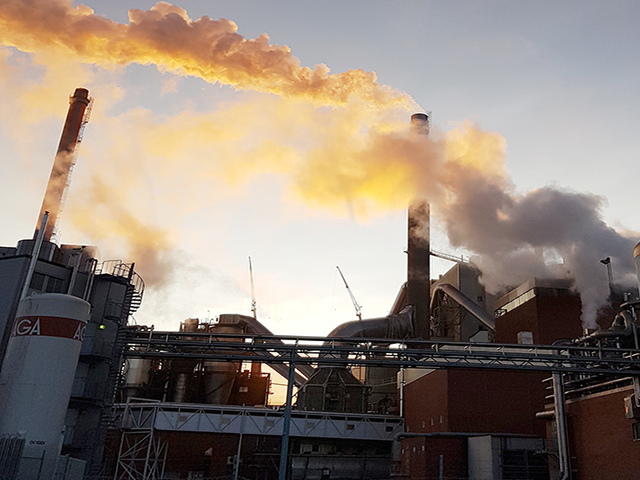District heating
District heating has many economic and environmental benefits. It is a flexible system that can both make use of waste heat and manage variations in electricity production and usage.
Flexible, fossil-free heating systems of the future
District heating is an efficient method for large-scale heating, that has both economic and environmental benefits. Through systems of pipes, heat from heating plants and cogeneration plants is distributed to large areas of residential housing and commercial properties. Outside Sweden, it is most common that the generated heat comes from the combustion of fossil fuels, but the climate crisis and increased energy demand have increasingly shifted focus to fossil-free fuel sources.
More efficient energy use, and new solutions
A large proportion of Sweden's residential and commercial properties are heated by fossil-free district heating, which has many economic and environmental advantages. IVL works with several project in the area of district heating, in order to make the current use more efficient, and to find new and sustainable ways to develop the district heating system.
Our experts provide assistance to the energy sector by way of systems analyses, sustainability assessment and climate calculations, in order to develop different system solutions.
Examples of IVL's work with district heating

Reuseheat: Cities heat themselves
A heating system that can make use of heat generated by people in a city – that's a piece in the puzzle of building a smart city. Reuseheat will demonstrate scalable systems for reusing unused heat flows in urban environments.

OptiHeat: optimized heat for areas with low-energy buildings
This project investigates four important heating technologies in areas with low-energy buildings, and their impact on costs and design of energy systems in the long term, and at the local and national levels.

Reference case: Fourth generation district heating in Kungsbacka
Eksta Bostads AB, a municipally-owned housing company, has a keen interest in sustainability and alternative energy sources. Together with IVL, they investigated district heating that uses heating sources with lower temperatures.

SoWhat: European collaboration on waste heat
Industrial waste heat is currently used very little in Europe. In a report for the EU project SoWhat, IVL has described the drivers for establishing more collaborations between businesses and industries.

Flexi-Sync: Flexible systems for heating and cooling
The Flexi-Sync project makes the heating sector more flexible, so it can meet challenges with more varied production and use of electricity. The project is a collaboration between 16 European partners, and its aim is to identify how flexibility can be optimized in the district heating and district cooling sector.
.jpg)
Book navigates the district heating technologies of the future
Reduced temperatures in buildings' heating systems can deliver several environmental benefits. In a book published in 2021, IVL presents the principal drivers for low-temperature district heating.
Contact
Want to know more about IVL's services and offers? Enter your email address and choose which area you want to know more about, and we will get back to you.
